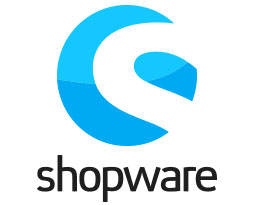
In this tutorial, we will show you how to install Shopware on Debian 9 Stretch. For those of you who didn’t know, Shopware is the next generation of open source e-commerce software made in Germany. Based on bleeding edge technologies like Symfony 2, Doctrine 2, and Zend Framework Shopware comes as the perfect platform for your next e-commerce project. Furthermore, Shopware provides an event-driven plugin system and an advanced hook system, giving you the ability to customize every part of the platform.
This article assumes you have at least basic knowledge of Linux, know how to use the shell, and most importantly, you host your site on your own VPS. The installation is quite simple and assumes you are running in the root account, if not you may need to add ‘sudo‘ to the commands to get root privileges. I will show you the step-by-step installation of Shopware on a Debian 9 (Stretch) server.
Prerequisites
- A server running one of the following operating systems: Debian 9 (Stretch).
- It’s recommended that you use a fresh OS install to prevent any potential issues.
- SSH access to the server (or just open Terminal if you’re on a desktop).
- A
non-root sudo useror access to theroot user. We recommend acting as anon-root sudo user, however, as you can harm your system if you’re not careful when acting as the root.
Install Shopware on Debian 9
Step 1. Before we install any software, it’s important to make sure your system is up to date by running the following apt-get commands in the terminal:
apt-get update apt-get upgrade
Step 2. Install LAMP (Linux, Apache, MariaDB, and PHP) server.
A Debian 9 LAMP server is required. If you do not have LAMP installed, you can follow our guide here.
Step 3. Installing Shopware on Debian.
Let’s download the latest stable Shopware CE version from this link into our new directory:
mkdir /var/www/shopware cd /var/www/shopware wget https://releases.shopware.com/install_5.5.7_f785facc70e39f2ca4292e78739457417f19fbcf.zip?_ga=2.110917381.1678735926.1552879434-1860898197.1552787146 -O shopware.zip sudo unzip shopware.zip
We will need to change some folder permissions:
sudo chown -R www-data:www-data /var/www/shopware/
Step 4. Configuring MariaDB for Shopware.
By default, MariaDB is not hardened. You can secure MariaDB using the mysql_secure_installation script. You should read and below each step carefully which will set a root password, remove anonymous users, disallow remote root login, and remove the test database and access to secure MariaDB.
mysql_secure_installation
Configure it like this:
- Set root password? [Y/n] y - Remove anonymous users? [Y/n] y - Disallow root login remotely? [Y/n] y - Remove test database and access to it? [Y/n] y - Reload privilege tables now? [Y/n] y
Next, we will need to log in to the MariaDB console and create a database for the Shopware. Run the following command:
mysql -u root -p
This will prompt you for a password, so enter your MariaDB root password and hit Enter. Once you are logged in to your database server you need to create a database for Shopware installation:
CREATE DATABASE shopware; GRANT ALL PRIVILEGES ON shopware.* TO 'shopware'@'localhost' IDENTIFIED BY 'your_strong_password'; FLUSH PRIVILEGES; \q
Step 5. Configuring Apache for Shopware.
You need to create a new virtual host directive in Apache for your domain. You can create the file with your favorite text editor. For example, we are using nano:
nano /etc/apache2/sites-available/shopware.conf
And enter the following information:
<VirtualHost *:80>
DocumentRoot /var/www/shopware
ServerName your-domain.com
<Directory /var/www/shopware/>
Options FollowSymlinks
AllowOverride All
Require all granted
</Directory>
ErrorLog ${APACHE_LOG_DIR}/shopware_error.log
CustomLog ${APACHE_LOG_DIR}/shopware_access.log combined
</VirtualHost>
Now, we can restart the Apache webserver so that the changes take place:
sudo a2ensite shopware.conf sudo a2enmod rewrite sudo systemctl restart apache2
Step 6. Accessing Shopware e-commerce.
Shopware will be available on HTTP port 80 by default. Open your favorite browser and navigate to http://yourdomain.com or http://server-ip and complete the required steps to finish the installation. If you are using a firewall, please open port 80 to enable access to the control panel.
Congratulations! You have successfully installed Shopware. Thanks for using this tutorial for installing Shopware open source e-